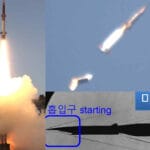Parsons Corporation has secured an $81 million contract from the U.S. Army to deliver advanced Command, Control, Communications, Computers, Combat Systems, Intelligence, Surveillance and Reconnaissance (C5ISR) radar capabilities. The award emphasizes integration of sensor technologies with AI/ML-driven decision-making tools to support operations across the continental United States (CONUS).
Contract Scope and Strategic Objectives
The contract was awarded by the U.S. Army Contracting Command – Aberdeen Proving Ground under a competitive process and supports the Program Executive Office for Intelligence, Electronic Warfare and Sensors (PEO IEW&S). The scope includes development and delivery of integrated radar systems that enhance situational awareness and threat detection within CONUS environments.
According to Parsons’ official statement on April 25, 2024, the effort will focus on fusing multiple sensor modalities—such as radar imagery, electro-optical/infrared (EO/IR), and signals intelligence (SIGINT)—into a unified operational picture. This aligns with broader Department of Defense (DoD) initiatives such as Joint All-Domain Command and Control (JADC2), which seeks seamless data integration across services.
Technology Integration: AI/ML-Driven Sensor Fusion
A core component of Parsons’ approach is leveraging artificial intelligence and machine learning (AI/ML) algorithms to automate data correlation from disparate sensors. This enables faster threat identification and prioritization in complex electromagnetic environments.
While specific system configurations remain classified or undefined publicly due to operational security considerations, Parsons has previously demonstrated AI-enabled C5ISR solutions under its high-assurance mission platforms portfolio. These include real-time data processing nodes that can ingest multi-domain ISR inputs—radar tracks, EO/IR feeds, acoustic signatures—and apply pattern recognition or anomaly detection models.
This capability is critical for defending against low-observable threats such as small UAVs or cruise missiles operating below traditional radar thresholds.
Operational Context: Homeland Defense and Critical Infrastructure Protection
The emphasis on CONUS deployment suggests a strong homeland defense orientation for this program. Potential applications include:
- Surveillance of strategic assets such as military bases or nuclear facilities
- Monitoring airspace around critical infrastructure hubs like ports or energy grids
- Providing persistent ISR coverage in support of NORAD/NORTHCOM missions
This also reflects growing concern over asymmetric threats including drone incursions by state or non-state actors into domestic airspace—a trend highlighted by recent FAA reports on unauthorized UAV activity near sensitive sites.
Industry Implications and Parsons’ Positioning
This award further cements Parsons’ role as a key integrator in the defense C5ISR ecosystem. The company has been steadily expanding its footprint in this domain through acquisitions such as BlackHorse Solutions in 2021—bringing cyber/EW capabilities—and Xator Corporation in 2022—adding physical security tech for sensitive government sites.
The $81 million contract adds to a growing portfolio of DoD work focused on multi-domain awareness platforms that blend traditional ISR with cyber-electromagnetic activities (CEMA). It also positions Parsons competitively within future JADC2-related solicitations where modularity and rapid integration are prioritized over bespoke hardware solutions.
Program Timeline and Future Outlook
No detailed delivery schedule was disclosed in public releases; however, typical execution timelines for similar PEO IEW&S programs range from 24–36 months depending on maturity levels of proposed technologies. Initial capability demonstrations may occur at test ranges such as Yuma Proving Ground or Aberdeen Test Center before fielding decisions are made.
If successful, this effort could scale into broader deployments supporting National Guard units or Department of Homeland Security partners responsible for domestic threat monitoring. It may also serve as a prototype pathway for exportable variants tailored to allied homeland defense requirements under Foreign Military Sales (FMS) frameworks.








